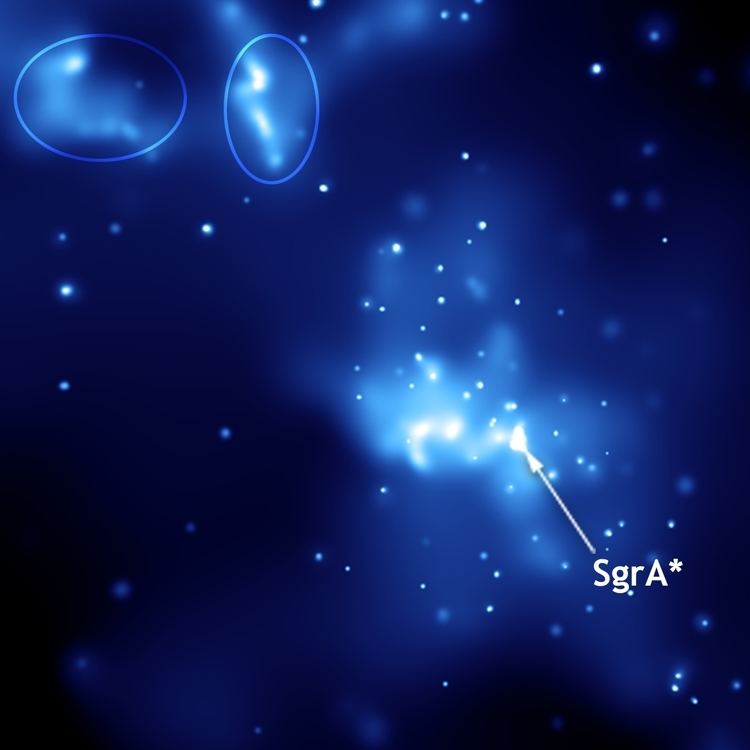Telescope style radio interferometer | ||
 | ||
Website www.eventhorizontelescope.org | ||
The Event Horizon Telescope (EHT) is a project to create a large telescope array consisting of a global network of radio telescopes and combining data from several very-long-baseline interferometry (VLBI) stations around the Earth. The aim is to observe the immediate environment of the Milky Way's supermassive black hole Sagittarius A** with angular resolution comparable to the black hole's event horizon.
Contents
Overview
The EHT is composed of many radio observatories or radio telescope facilities around the world to produce a high-sensitivity, high-angular-resolution telescope. Through the technique of very-long-baseline interferometry (VLBI), many independent radio antennae separated by hundreds or thousands of miles can be used in concert to create a "virtual" telescope with an effective diameter of the entire planet. The effort includes development and deployment of submillimeter dual polarization receivers, highly stable frequency standards to enable very-long-baseline interferometry at 230–450 GHz, higher-bandwidth VLBI backends and recorders, as well as commissioning of new submillimeter VLBI sites.
Each year since its first data capture in 2006, the EHT array has moved to add more observatories to its global network of radio telescopes. The first image of the Milky Way's supermassive black hole, Sagittarius A**, could be produced in April 2017, and it will also test Einstein's general relativity at the extreme.
Data collected on hard drives must be transported by jet airliner (a so-called sneakernet) from the various telescopes to the MIT Haystack Observatory in Massachusetts, USA, where the data are cross-compared and analyzed on a grid computer made from about 800 CPUs all connected through a 40 Gbit/s network.
Contributing institutes
Some contributing institutions are:
